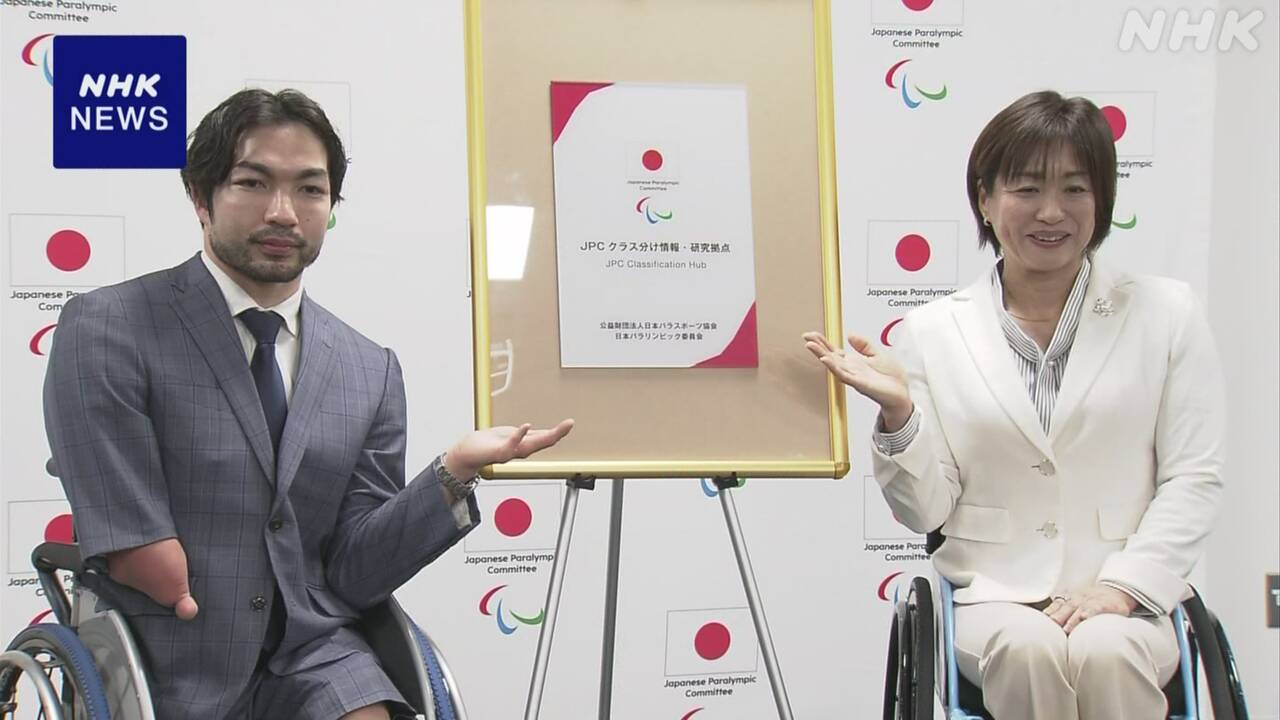A new base has been established at the National Training Center in Kita Ward, Tokyo, to collect and strategically utilize the latest domestic and international information on classification of disabilities, which is a condition for participation in the Paralympics, and an opening ceremony was held on the 3rd. It was done.
In the 22 Paralympic sports, athletes with various disabilities are divided into classes according to the type and severity of their disability so that they can compete fairly, and in order to participate in the Paralympic Games, it is required that athletes be judged by experts at an international competition in advance. I am.
However, if the rules change, there will be differences in the way information is collected depending on the sports organization, so the JPC (Japan Paralympic Committee) collects the latest information from Japan and overseas, shares it with each sports organization, and uses it strategically. A new information and research center has been established.
An opening ceremony was held on the 3rd, and JPC Chairman Junichi Kawai said, ``Class division is an important topic related to improving competitive ability, but there are many issues.First of all, we would like to work towards a solution for the Paris Paralympics.'' I said hello.
According to a survey conducted by JPC two years ago among approximately 190 players, 71% answered that ``providing accurate information is the most important support'' regarding changes to classification rules and the latest information. We are also working on supporting and developing athletes.
Tokyo Paralympic swimming gold medalist Takayuki Suzuki, who participated in the ceremony, said, ``Despite the fact that classification is the basis of para sports, many athletes have little knowledge about it.For athletes, changing classes is like changing the world. "It's a matter of life and death, so I want the base to properly disseminate information."
Class classification also affects athletes
Each time the rules regarding classification change, it has a major impact on athletes who have been training for the Paralympic Games.
Tomomi Sato, who won the gold medal in the men's 1500m track and field at the Tokyo Paralympic Games, was in the T52 wheelchair class, but the 1500m was not included in the event at the Paris Games.
For this reason, Sato is focusing on the 400m and aiming for her medal.
In addition, para track and field athlete Tomoya Ito was judged to be in a different class than before in the classification held just before the Tokyo Paralympic Games, and was unable to participate in three events in classes in which he was expected to win medals.
Ito competed in the 400-meter race in a new class, but he did not advance to the finals as he competed against athletes with less severe disabilities.
What is the “classification” of para athletes?
Classification of para athletes is a unique system for the Paralympics that allows athletes with different types and degrees of disabilities to compete fairly.
Classes are divided according to international competitions so that athletes from each country have equal opportunities.
Classification is done by doctors with specialized qualifications, who interview athletes and observe them actually competing to determine how much motor function they have left. .
The classification of athletes who are at risk of developing or recovering from a disability has a validity period of two to four years, and must be reclassified periodically.
When the classification decision changes, the opponents also change, so athletes with advanced disease may move to classes with more severe disabilities and get closer to winning medals.

